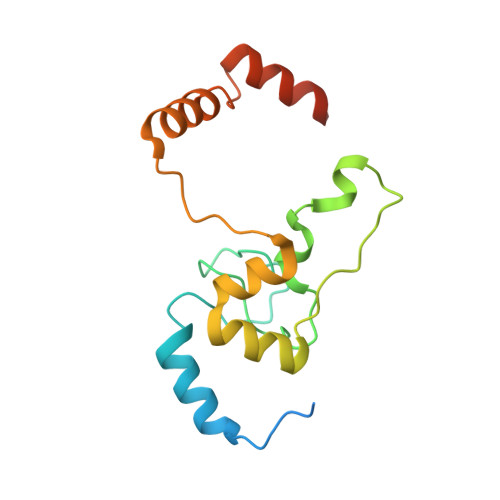Direct tests of cytochrome c and c1 functions in the electron transport chain of malaria parasites
Espino-Sanchez, T.J., Wienkers, H., Marvin, R.G., Nalder, S.A., Garcia-Guerrero, A.E., VanNatta, P.E., Jami-Alahmadi, Y., Mixon Blackwell, A., Whitby, F.G., Wohlschlegel, J.A., Kieber-Emmons, M.T., Hill, C.P., Sigala, P.A.(2023) Proc Natl Acad Sci U S A 120: e2301047120
- PubMed: 37126705
- DOI: https://doi.org/10.1073/pnas.2301047120
- Primary Citation of Related Structures:
7TXE, 7U2V - PubMed Abstract:
The mitochondrial electron transport chain (ETC) of Plasmodium malaria parasites is a major antimalarial drug target, but critical cytochrome (cyt) functions remain unstudied and enigmatic. Parasites express two distinct cyt c homologs ( c and c -2) with unusually sparse sequence identity and uncertain fitness contributions. P. falciparum cyt c -2 is the most divergent eukaryotic cyt c homolog currently known and has sequence features predicted to be incompatible with canonical ETC function. We tagged both cyt c homologs and the related cyt c 1 for inducible knockdown. Translational repression of cyt c and cyt c 1 was lethal to parasites, which died from ETC dysfunction and impaired ubiquinone recycling. In contrast, cyt c -2 knockdown or knockout had little impact on blood-stage growth, indicating that parasites rely fully on the more conserved cyt c for ETC function. Biochemical and structural studies revealed that both cyt c and c -2 are hemylated by holocytochrome c synthase, but UV-vis absorbance and EPR spectra strongly suggest that cyt c -2 has an unusually open active site in which heme is stably coordinated by only a single axial amino acid ligand and can bind exogenous small molecules. These studies provide a direct dissection of cytochrome functions in the ETC of malaria parasites and identify a highly divergent Plasmodium cytochrome c with molecular adaptations that defy a conserved role in eukaryotic evolution.
Organizational Affiliation:
Department of Biochemistry, University of Utah School of Medicine, Salt Lake City, UT 84112.















